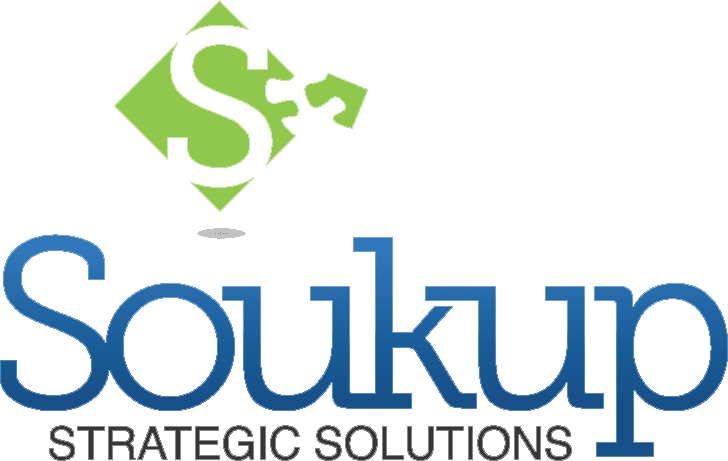Is your nonprofit’s approach to donor stewardship as strong as it should be? Too often, nonprofit donor stewardship becomes the afterthought of fundraising—important in theory but easily overlooked when the next campaign or event looms large. Many organizations focus heavily on acquisition and solicitation, yet neglect what comes after—the careful tending of relationships once a gift is made. That’s where true stewardship begins: the foundation of long-term sustainability.
Why Nonprofit Donor Stewardship Matters
The absence of stewardship is easy to spot: donors who feel unappreciated, small gifts dismissed as inconsequential, acknowledgment that is perfunctory or delayed, and communication that feels transactional. Donors who experience this drift away, leaving organizations to spend heavily on replacing them.
By contrast, effective stewardship multiplies loyalty. Small monthly donors, often overlooked, have in many cases become the most impactful legacy givers. At Lighthouse for the Blind, faithful modest contributors—who gave $5 or $10 a month for decades—ultimately left estate gifts that transformed the organization.
Their loyalty was not born of wealth but of consistency and care. Each small acknowledgment of their giving reinforced a bond that endured for years.
The lesson is unmistakable: no gift is too small to merit gratitude, no donor too modest to warrant attention.
The Power of a Personal Touch in Donor Stewardship
Simple Gestures That Make a Lasting Impression
A tax receipt may satisfy a donor’s records. It does not satisfy their heart. Donors want to know that their contribution is noticed, valued, and meaningful. That is where multiple, authentic touches become essential.
Handwritten notes remain timeless. A card signed by a board member or CEO signals that gratitude comes from the top. When those notes come from program staff or even beneficiaries, donors see the living impact of their generosity.
When Gratitude Feels Genuine (and When It Doesn’t)
Equally effective are brief phone calls, emails with photos, or a short video message created outside of any fundraising campaign. The timing matters: acknowledgment offered when no “ask” is on the horizon communicates sincerity.
Some nonprofits, such as Big Brothers Big Sisters of Kansas City, creatively combine technology with personalization by sending customized birthday videos through ThankView. Staff, volunteers, and even children sing “Happy Birthday” or share a heartfelt message. These gestures may seem simple, but their impact is lasting—they demonstrate that donors are seen and valued for who they are, not just for what they give.
Continuity and Consistency Build Donor Trust
Why Development Staff Turnover Matters
Stewardship also requires continuity. Donors do not form relationships with institutions; they form them with people. Development officers who stay in their roles carry not only donor histories but stories, details, and connections that make donors feel part of a family.
Conversely, high turnover can erode confidence. When donors must reintroduce themselves or repeat their giving history, they begin to feel like strangers.
Building Institutional Memory Through Relationships
Consistency of staff, combined with consistency of stewardship practices, leads to trust—and trust is the currency of philanthropy. The best development professionals treat stewardship not as a duty but as a relationship. They track birthdays, anniversaries, retirements, and other milestones, sending personal notes and recognition that transform institutional memory into connection.
Stewardship as Accountability and Transparency
Show Impact, Don’t Just Report It
Gratitude is vital, but so is accountability. Donors expect to see impact and transparency. Organizations that report back regularly—through newsletters, reports, or intimate gatherings—create confidence.
To bring accountability to life, some of the most effective practices involve inviting donors to hear directly from staff and beneficiaries. Briefings, receptions, and behind-the-scenes tours put a human face on results. Donors are reassured not only that their dollars were well used, but that they are partners in mission-driven outcomes.
Combining Data and Storytelling
Annual reports and leadership publications should highlight both financial integrity and programmatic success. This combination of numbers and narrative underscores that contributions are not only tracked but celebrated in tangible achievements.
Creating Experiences That Deepen Donor Connection
When donors are invited to insider events, given VIP access, or included in exclusive briefings, they feel like valued partners rather than outside observers. Equally powerful are gatherings created solely for gratitude.
An annual appreciation dinner or reception—without solicitation—sends a clear message that donors matter beyond their wallets. Details matter here: place cards at tables, thoughtfully arranged seating, even small tokens that tie to mission. These small but deliberate touches show that gratitude is not generic—it is personal.
The Alexander Graham Bell Association for the Deaf and Hard of Hearing offers an extraordinary example. Their Leadership Opportunities for Teens (LOFT) program not only cultivates future leaders but also connects donors directly to beneficiaries. Teens in the program personally write letters to donors, sharing how the experience shapes their confidence and future aspirations. When donors witness these moments firsthand, stewardship becomes unforgettable—a living testimony of impact.
“When a donor sees their generosity reflected in the faces and voices of the very lives they touch, stewardship ceases to be an obligation and becomes a celebration of shared humanity.”
— Emilio Alonzo-Mendoza, CEO, Alexander Graham Bell Association for the Deaf and Hard of Hearing
For lasting reminders, organizations may turn to donor recognition walls, named spaces, or framed photos. The key is authenticity. Done well, recognition does not appear transactional but rather symbolizes the enduring partnership between donor and mission.
Avoiding the Common Pitfalls of Donor Stewardship
When stewardship lapses, the consequences are swift and costly. Donors who feel invisible rarely return. Standard operating procedures should be in place for gifts at every level—from $5 to $500,000—so that each contribution is met with acknowledgment proportional to its role in sustaining the mission.
Neglecting the majority of donors, who may give under $5,000 annually yet represent the bulk of the donor base, is a recipe for attrition. Stewardship must be scaled, thoughtful, and consistent across all segments. Acquiring new donors costs far more than retaining loyal ones, and no organization can afford to squander hard-earned relationships. Every act of gratitude is an investment in trust.
Best Practices to Strengthen Nonprofit Donor Stewardship
Practical Steps for Your Team
- Issue timely acknowledgments—ideally within 48 hours of receipt.
- Include handwritten notes and phone calls from board members or executives.
- Track donor milestones and incorporate them into outreach.
- Provide regular impact reports—both financial and programmatic.
Embedding Stewardship Across the Organization
- Create experiences (tours, briefings, appreciation events) that connect donors directly to mission.
- Give clients and beneficiaries opportunities to show donors the real impact of their generosity.
- Use thoughtful recognition methods that symbolize legacy rather than transaction.
- Ensure stewardship responsibilities are organization-wide, not confined to the development office.
When stewardship is woven into the culture of a nonprofit, every staff member, volunteer, and board member shares responsibility for gratitude. This collective effort amplifies authenticity and ensures that no donor feels overlooked.
Turning Donor Stewardship Into Legacy
Nonprofit donor stewardship is not a tactic—it is a philosophy. It recognizes that behind every check or online gift is a person who seeks meaning, belonging, and assurance that their sacrifice matters.
The strongest nonprofits understand that donors may not recall the exact size of their last gift, but they will remember how they were made to feel. When donor stewardship is consistent, sincere, and creative, it builds not only loyalty but legacy.
In the end, beyond the gift lies the relationship, and beyond the relationship lies the legacy of trust. Practiced with purpose, nonprofit donor stewardship transforms supporters into lifelong advocates—and ensures that the mission they love will thrive for generations to come.
Now is the time to look beyond the next campaign and reimagine what gratitude can do. When stewardship becomes part of your organization’s culture—not just the checklist—donor relationships deepen, impact grows, and your mission endures.
For organizations ready to strengthen their culture of gratitude, expert guidance can make all the difference. At Soukup Strategic Solutions, we help nonprofits turn good fundraising into lasting relationships. Through customized stewardship strategies, communication plans, and donor engagement systems, our team helps you strengthen loyalty, increase retention, and build the foundation for legacy giving.
If you’re ready to elevate your nonprofit donor stewardship, schedule a free consultation to identify your next steps toward deeper donor relationships and sustainable growth.






